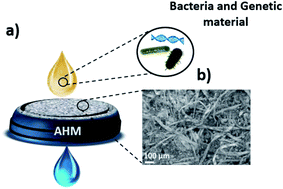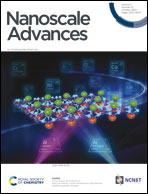Amyloid hybrid membranes for bacterial & genetic material removal from water and their anti-biofouling properties†
Abstract
Water scarcity and contamination by biological pollutants are global challenges that significantly affect public health. Reverse osmosis, nanofiltration and ultrafiltration technologies are very effective for the elimination of pathogens and most contaminants but associated with considerable capital and operating costs, high energy consumption and the use of chlorinated chemicals to suppress membrane fouling. Additionally, the pressure needed by these techniques may disrupt the pathogenic microbial cell membranes, causing the release of genetic material (fragments of DNA, RNA and plasmids) into the water. Here, we introduce the simultaneous removal of both bacteria and associated genetic material using amyloid hybrid membranes, via a combined adsorption and size exclusion mechanism. Amyloid hybrid membranes can remove upto and beyond 99% of the genetic material by adsorption, where amyloid fibrils act as the primary adsorbing material. When the same membranes are surface-modified using chitosan, the anti-biofouling performance of the membranes improved significantly, with a bacterial removal efficiency exceeding 6 log.



 Please wait while we load your content...
Please wait while we load your content...